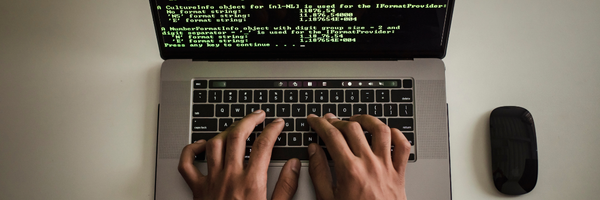Top Cybersecurity Gaps Businesses Need to Close Before 2026
Introduction
As businesses continue their digital transformation journeys, cybersecurity has become more than an IT concern—it’s a business imperative. Every organization, regardless of size or industry, depends on technology to operate efficiently, communicate with customers, and protect data. Yet, as technology advances, so do the threats targeting it.
The transition to hybrid work, cloud computing, and connected devices has expanded the attack surface for many companies. While most organizations have basic protections in place, there are still critical gaps that leave systems and data vulnerable. These gaps often stem from outdated practices, inconsistent training, or a lack of proactive monitoring—issues that can turn into costly breaches if ignored.
As 2026 approaches, now is the time to close those gaps and build a stronger cybersecurity foundation. By identifying weak points before attackers do, your business can operate confidently, stay compliant, and protect its reputation.
The Growing Risk Landscape
Cybersecurity threats are not slowing down. In fact, global cybercrime costs are projected to exceed $10 trillion annually within the next few years. Phishing, ransomware, insider threats, and cloud misconfigurations remain some of the most common causes of data breaches.
Many organizations assume their existing tools—such as antivirus software or firewalls—are enough. But today’s attacks are far more sophisticated, often exploiting overlooked weaknesses within everyday operations.
The reality is that most breaches aren’t the result of complex hacking. They’re caused by simple gaps in processes, employee awareness, and technology upkeep. Addressing these areas proactively helps businesses stay one step ahead.
Five Cybersecurity Gaps to Close Before 2026
- Inconsistent Multi-Factor Authentication (MFA) Adoption
Multi-Factor Authentication is one of the simplest and most effective ways to prevent unauthorized access. Yet many organizations still fail to implement it across all systems.
Employees might use MFA on email or cloud storage but not on internal applications, mobile devices, or remote access tools. This inconsistency creates entry points for attackers who only need one weak link.
Action Step: Conduct a full MFA audit across your systems. Ensure every critical platform—email, file sharing, HR, finance, and remote desktops—requires MFA for access.
- Limited or Outdated Phishing Awareness Training
Human error continues to be the leading cause of breaches. Even the best firewalls can’t protect against an employee clicking a malicious link. Traditional, one-time cybersecurity training is no longer enough.
Without regular, interactive training, employees forget best practices and fail to recognize evolving threats.
Action Step: Implement ongoing phishing simulations and micro-trainings that keep employees alert. Teach staff how to verify sender authenticity, recognize social engineering attempts, and report suspicious messages immediately.
- Endpoint Security Gaps
With the rise of hybrid work, endpoints—laptops, tablets, smartphones—have become the new perimeter. Many organizations lack consistent endpoint protection policies, leaving remote devices exposed to malware, data leaks, or unauthorized access.
Action Step: Deploy a unified endpoint management system that enforces encryption, patch updates, and device compliance checks automatically. Every device that connects to your network should meet security standards before gaining access.
- Cloud Configuration and Access Management Risks
Cloud adoption has streamlined business operations, but misconfigured settings and poor access controls remain top causes of data exposure. Shared credentials, excessive user permissions, and unsecured APIs can all open doors to attackers.
Action Step: Review cloud configurations regularly. Apply the principle of least privilege—granting users only the access they need. Leverage automated monitoring tools that detect and alert you to suspicious cloud activities in real time.
- Lack of Continuous Monitoring and Incident Response Planning
Cybersecurity is not a one-time effort—it requires constant vigilance. Many organizations still rely on periodic scans or annual assessments, leaving long windows where threats go undetected.
Without real-time monitoring and a tested response plan, even a small incident can escalate into a full-scale crisis.
Action Step: Establish 24/7 system monitoring and create a documented incident response playbook. Define roles, communication protocols, and escalation steps to ensure your team can act quickly under pressure.
The Cost of Leaving Gaps Unaddressed
Ignoring these cybersecurity weaknesses doesn’t just create technical risk—it carries serious financial and reputational consequences. Breaches can result in regulatory penalties, data loss, operational downtime, and loss of customer trust.
On average, the cost of a single data breach now exceeds $4 million. For many small and mid-sized organizations, that’s enough to halt growth or force difficult cutbacks.
By addressing vulnerabilities now, businesses can minimize risk, strengthen customer confidence, and maintain compliance with evolving data protection regulations heading into 2026.
A Real-World Example
Consider a regional services firm that relied on remote teams and cloud-based tools. They assumed their antivirus and password policies were sufficient. However, during a targeted phishing campaign, one employee unknowingly provided credentials that allowed attackers to infiltrate their network.
Because they lacked centralized monitoring, the breach went undetected for weeks. Sensitive data was exposed, and recovery costs exceeded their annual IT budget.
A competitor in the same industry, by contrast, had recently implemented proactive cybersecurity management with multi-factor authentication, endpoint protection, and cloud oversight. When a similar phishing attempt occurred, it was blocked immediately, and no data was compromised.
The difference wasn’t the size of their IT budget—it was the strength of their preparation.
How IMOS Works Protects Your Business
At PC Works Tech, we understand that cybersecurity is not just about tools—it’s about creating a resilient IT foundation that supports growth without compromising protection.
That’s why IMOS Works (Infrastructure Management & Optimization Solution) includes built-in security measures designed to identify and close the very gaps that threaten businesses today.
With IMOS Works, your organization benefits from:
• Proactive Security Monitoring: 24/7 oversight that detects unusual activity before it becomes a problem.
• Automated Patch Management: Regular updates to close known vulnerabilities across your systems.
• Endpoint and Network Protection: Consistent safeguards for every device and connection across your infrastructure.
• Compliance and Reporting: Detailed insights that help you meet regulatory standards and prepare for audits.
• Strategic Security Alignment: A dedicated team ensuring your cybersecurity strategy evolves with your business goals.
IMOS Works takes the guesswork out of cybersecurity, ensuring your systems stay secure, optimized, and ready for what’s next.
Conclusion: Strengthen Your Defenses Before 2026
Cyber threats are evolving, but so are the tools and strategies that defend against them. Businesses that take a proactive approach today will enter 2026 with greater confidence, fewer vulnerabilities, and stronger operational continuity.
Closing cybersecurity gaps is not just an IT project—it’s a strategic investment in your company’s stability and reputation.
At PC Works Tech, we help businesses identify weaknesses, reinforce defenses, and maintain the visibility needed to stay protected. Through IMOS Works, we deliver the proactive monitoring, patching, and optimization that modern organizations need to thrive securely.
Don’t wait for the next breach to reveal your weak spots—address them now.
Contact PC Works Tech today to learn how IMOS Works can help strengthen your cybersecurity and prepare your business for 2026 and beyond




No responses yet